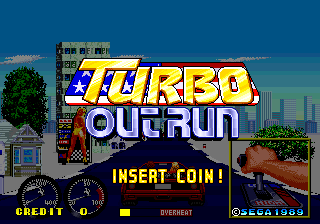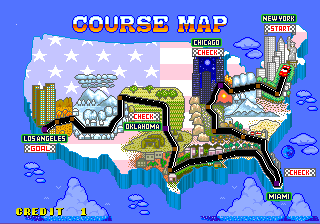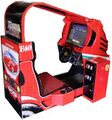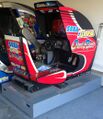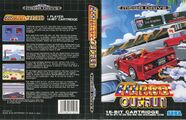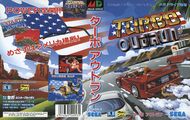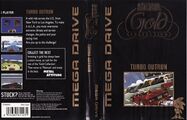Difference between revisions of "Turbo OutRun"
From Sega Retro
Andy198887 (talk | contribs) |
m (Reverted edits by Andy198887 (talk) to last revision by Black Squirrel) |
||
| Line 11: | Line 11: | ||
| releases={{releases | | releases={{releases | ||
| arcade_date_world=1989-02-11 | | arcade_date_world=1989-02-11 | ||
| − | | md_date_eu=1992-06 | + | | md_date_eu=1992-06 |
| md_code_eu=1123 | | md_code_eu=1123 | ||
| md_date_jp=1992-03-27 | | md_date_jp=1992-03-27 | ||
| md_code_jp=G-4053 | | md_code_jp=G-4053 | ||
| md_rrp_jp=6,000 | | md_rrp_jp=6,000 | ||
| − | | md_date_au= | + | | md_date_au=199x |
| − | | md_date_au_sgc= | + | | md_date_au_sgc=199x |
| md_code_au_sgc=FTUR06SMC | | md_code_au_sgc=FTUR06SMC | ||
}} | }} | ||
{{releasesHC | {{releasesHC | ||
| − | | fmtowns_date_jp=1989 | + | | fmtowns_date_jp=1989 |
}} | }} | ||
}} | }} | ||
Revision as of 09:42, 19 March 2017
- For non-FM Towns home computer versions, see Turbo OutRun (home computers).
| Turbo OutRun | |||||
|---|---|---|---|---|---|
| System(s): Sega OutRun hardware, Sega Mega Drive, FM Towns | |||||
| Publisher: Sega, CRI | |||||
| Developer: Sega AM2, Tiertex, CRI | |||||
| Genre: Racing | |||||
|
Turbo OutRun (ターボアウトラン) is an arcade sequel to OutRun released in 1989. Though not the first sequel to OutRun, Turbo OutRun is considered to be the first "true" sequel, having been built by a similar team at Sega AM2 with the arcades in mind.
Contents
Gameplay
Turbo OutRun has the player make a journey across the United States of America, from New York to Los Angeles. It is a more linear game than its predecessor, offering no forks in the road and therefore less of an incentive to play the game again after completion.
For the most part, the game is very similar to its predecessor, save for new graphics and music. Turbo OutRun offers several new features however, such as weather effects and obstacles which can slow your journey down. Like its predecessor, the player drives a car which looks suspiciously like Ferrari, however rather than being a Ferrari Testarossa, it is a Ferrari F40. You are also set against a rival opponent, driving what appears to be a white Porsche 959 (a nod towards the rivalry between Ferrari and Porsche at that time).
The game is divided into four "sub-goals". Upon reaching a goal, the player is able to upgrade their car. If the opponent gets to the goal first, the player's girlfriend will sit in the oppoent car in the next race, however if the player gets there first, a 1,000,000 point bonus is given.
The other major addition to Turbo OutRun is the inclusion of a "Turbo" feature: the back of the car has a rocket-type exhaust on the back and the player is given a "boost" button, which allows the car to travel faster. If the boost is left on for too long however, the car will overheat, and will be punished with slowdown. It is also the first OutRun game to offer an automatic transmission option.
After each goal, the player is taken to a shop where they can apply one of three upgrades to their car: a better engine, high-grip tires, or a better turbo. Each upgrade may be applied only once, and since there are four sections, the player will eventually have a maxed-out car.
The arcade version also allows you to continue from the beginning of the stage if you lose, a feature that did not survive into later OutRun games.
There are four stage songs: "Rush a Difficulty", "Keep Your Heart", "Shake the Street", and "Who Are You". Unlike in other OutRun games, the player cannot choose the song currently playing — they are tied to each section. Additionally, every version of the game appears to use a different song order, and the Sega Mega Drive port changes the song titles ("Insanity", "Highway", "Main Theme", and "Funky run", respectively, in addition to having its own songs).
History
Development
Though very different to the rest of the series, Turbo OutRun is arguably closer to Yu Suzuki's vision for the original OutRun, being set in the United States of America and featuring various scrapped ideas such as a checkpoint system.
Like OutRun Ferrari were not consulted during the development of this game, although the Ferrari brand is used on Turbo OutRun arcade cabinets.
Release
Turbo OutRun was released as both a stand-alone arcade cabinet and as an upgrade kit to the original OutRun. The upgrade kits offer very minor aesthetic changes - a different marquee and extra "Turbo" stickers. Some Turbo OutRun cabinets were converted back into regular OutRun machines as the prior game proved more popular - Turbo OutRun cabinets can be identified by the use of Ferrari branding.
Legacy
The game was ported to the Sega Mega Drive in 1992 exclusively in Japan and Europe, and was brought to the Amiga, Amstrad CPC, Atari ST, Commodore 64, DOS computers and ZX Spectrum too. Each of these ports suffer from cutbacks as sprite scaling is not supported by these systems.
Production credits
OutRun Hardware version
Game Design: Bin
Program: Bin, Coma, Okape
Design: Mr.Jee, Papa, Gudon
Sound: Kerotan, Hiro
Sp. Thanks: Sada, Yu.
Presented by ©Sega
Gallery
Magazine articles
- Main article: Turbo OutRun/Magazine articles.
Promotional material
Physical scans
Arcade version
| Sega Retro Average | ||||
|---|---|---|---|---|
|
| N/A | |
|---|---|
| Based on 0 reviews | |
| Arcade, US | ||||
|---|---|---|---|---|
| Arcade, JP | ||||
|---|---|---|---|---|
Mega Drive version
| Sega Retro Average | |||||||||||||||||||||||||||||||||||||||||||||||||||||||||||||||||||||||||||||||||||||||||||||||||||||||||||||||||||||||||||||||||
|---|---|---|---|---|---|---|---|---|---|---|---|---|---|---|---|---|---|---|---|---|---|---|---|---|---|---|---|---|---|---|---|---|---|---|---|---|---|---|---|---|---|---|---|---|---|---|---|---|---|---|---|---|---|---|---|---|---|---|---|---|---|---|---|---|---|---|---|---|---|---|---|---|---|---|---|---|---|---|---|---|---|---|---|---|---|---|---|---|---|---|---|---|---|---|---|---|---|---|---|---|---|---|---|---|---|---|---|---|---|---|---|---|---|---|---|---|---|---|---|---|---|---|---|---|---|---|---|---|---|
|
| 57 | |
|---|---|
| Based on 25 reviews | |
| Mega Drive, AU |
|---|
|
| Mega Drive, AU (Sega Gold Collection) |
|---|
FM Towns version
References
- ↑ http://www.mamedb.com/game/toutrun
- ↑ 2.0 2.1 File:ConsolesPlus FR 006.pdf, page 72 Cite error: Invalid
<ref>tag; name ":File:ConsolesPlus FR 006.pdf_p72" defined multiple times with different content - ↑ File:HobbyConsolas ES 010.pdf, page 82
- ↑ 4.0 4.1 File:Joypad FR 009.pdf, page 70 Cite error: Invalid
<ref>tag; name ":File:Joypad FR 009.pdf_p70" defined multiple times with different content - ↑ 5.0 5.1 File:Joystick FR 027.pdf, page 142 Cite error: Invalid
<ref>tag; name ":File:Joystick FR 027.pdf_p142" defined multiple times with different content - ↑ 6.0 6.1 File:MeanMachines UK 18.pdf, page 78 Cite error: Invalid
<ref>tag; name ":File:MeanMachines UK 18.pdf_p78" defined multiple times with different content - ↑ File:MeanMachinesSega01UK.pdf, page 127
- ↑ 8.0 8.1 File:SegaPro UK 07.pdf, page 40 Cite error: Invalid
<ref>tag; name ":File:SegaPro UK 07.pdf_p40" defined multiple times with different content - ↑ 9.0 9.1 File:Supergame BR 11.pdf, page 39 Cite error: Invalid
<ref>tag; name ":File:Supergame BR 11.pdf_p39" defined multiple times with different content - ↑ Beep! MegaDrive, "April 1992" (JP; 1992-03-07), page 36
- ↑ Cool Gamer, "9" (RU; 2002-10-13), page 229
- ↑ Mean Machines: The Essential Sega Guide, "" (UK; 1993-11-18), page 111
- ↑ Hippon Super, "April 1992" (JP; 1992-03-04), page 84
- ↑ Hobby Consolas, "Julio 1992" (ES; 1992-0x-xx), page 90
- ↑ Sega Mega Drive Advanced Gaming, "January 1993" (UK; 199x-xx-xx), page 95
- ↑ Mega Drive Fan, "June 1992" (JP; 1992-05-08), page 83
- ↑ Mega, "June 1993" (UK; 1993-05-20), page 21
- ↑ Mega, "June 1994" (UK; 1994-05-19), page 65
- ↑ Mega Force, "Juin 1992" (FR; 1992-06-05), page 78
- ↑ MegaTech, "April 1992" (UK; 1992-03-20), page 36
- ↑ Mean Machines Sega, "October 1992" (UK; 1992-09-xx), page 142
- ↑ Play Time, "7/92" (DE; 1992-06-03), page 91
- ↑ Sega Power, "May 1992" (UK; 1992-04-02), page 38
- ↑ Sega Pro, "April 1993" (UK; 1993-03-11), page 68
- ↑ Sega Opisaniy i sekretov, "14000 Opisaniy i sekretov" (RU; 2003-03-11), page 207
- ↑ Sega Saturn Magazine, "September 1995" (JP; 1995-08-08), page 87
- ↑ Supersonic, "Juillet/Août 1992" (FR; 1992-xx-xx), page 12
- ↑ Video Games, "6/92" (DE; 1992-05-29), page 55
- Pages with reference errors
- No players field
- Use romtable template
- All games
- Use Creditstable template
- Old-style rating (cuamiga)
- External rating reference
- Rating without PDF source
- Update ratings template
- 1 old ratings
- No ratings
- Old-style rating (consolesplus)
- Use magref
- Old-style rating (hobbyconsolas)
- Old-style rating (joypad)
- Old-style rating (joystick)
- Old-style rating (mdag)
- Old-style rating (mega)
- Old-style rating (megatech)
- Old-style rating (mm)
- Old-style rating (mms)
- Old-style rating (segapower)
- Old-style rating (segapro)
- Old-style rating (supergame)
- 13 old ratings
- OutRun (franchise)
- OutRun hardware games
- Mega-Tech games
